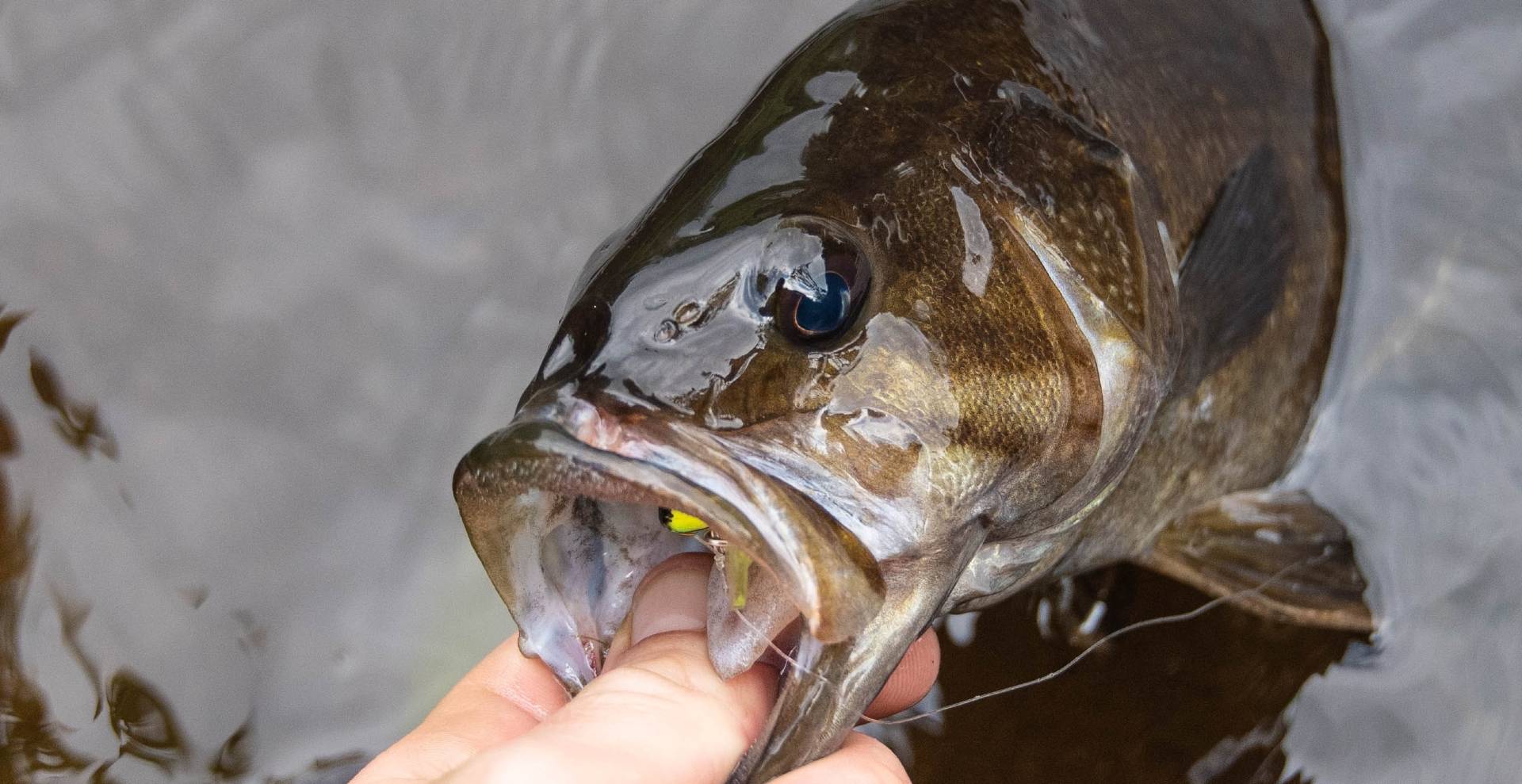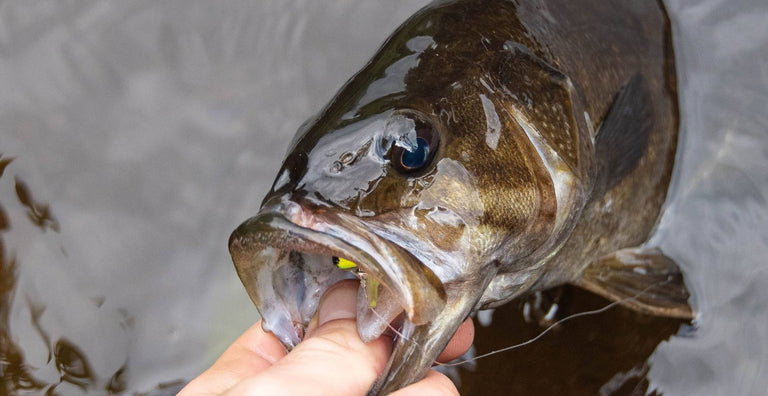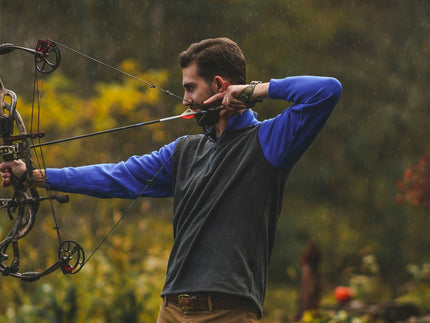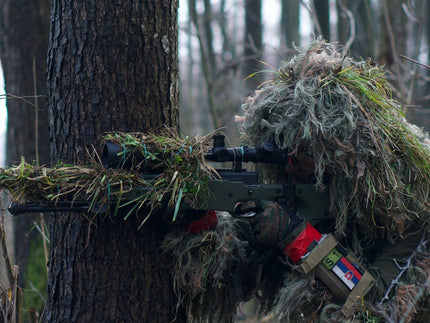Fishing for bass can be so enjoyable that it is almost addicting. It can also be extremely frustrating and disappointing if you do not know where to go fishing for bass and how to fish for bass. Here we offer some bass fishing tips for beginners that will get you started on your way to successful bass fishing. We start with the basics such as where bass live. This is because even before you start looking at live bait versus artificial lures, types of fishing rods, technique and the rest, you need to know where to find the bass that you seek.
Where to Fish for Bass
The first of our bass fishing tips has to do with where you need to go to find this fish. Bass live in lakes and slow-moving rivers. Although they are a freshwater fish, bass also live in brackish water where sea water mixes with fresh. Bass in large, slow moving rivers or streams with soft bottoms tend to congregate in clear water. Immature bass are often found in schools but full-grown adults live solitary lives. If adults congregate in an area they do not interact but rather are all there because it is the best spot because of protective cover or availability of food.
You will find bass especially in places where they can hide under rock ledges, logs, or man-made structures. Thick vegetation also serves as cover for bass when other structures are missing.
When to Fish for Bass
The best bass fishing is from May to July and your bass fishing will be most successful in the early morning or late evening. When the sun is not especially bright and the temperature is cooler is when this fish is most active.
What Bass Eat
The next of our bass fishing tips has to do with what bass eat which will tell you what kinds of bait to use to catch them. Bass eat pretty much anything that swims in front of them and does not attack and eat them first. That is to say, bass are opportunistic feeders. This gives you a lot of leeway in what you choose for bait. When choosing a location and bait it is important to know that bass do not just strike at bait when they are hungry. They may react to a perceived threat or to defend their territory. This is partly why some of the “exaggerated” features of lures work so well.
When you are choosing your bait, make sure that it matches what a bass will be searching for in the places where you are fishing. For example, in shallow, weedy areas near a shoreline the bass may be eating frogs. If you are top fishing in such an area, make sure that your live bait or artificial lure matches or resembles what your target bass is currently dining on.
Although we would expect bass to go after panfish, shad, or minnows swimming above them in the water, frogs, salamanders, and crawdads are also commonly part of their diet. And, since bass are not really picky, birds, mice, baby ducks, and even snakes become lunch as well. We don’t suggest that you use a mouse or baby duck lure but otherwise, try to use bait that matches what the bass is expecting in the area.

Choosing Bait for Bass Fishing
You now know where to go to find bass and know a bit about their behavior, what they like to eat, and what will provoke them to strike. So, what bait do you choose? Of all the bass fishing tips, this becomes the most important when you are ready to fish. You have two general choices when it comes to bait. You can use live bait or artificial lures. Which is better?
Since bass will eat almost anything you would think that live bait would always be the best way to catch this fish. But, do you choose to fish with minnows, worms, crayfish, insect larvae, leeches, or frogs? Will you bring one type of bait with you or several? Then how are you going to keep the bait fresh? How many times do you want to change to different types of live bait? How much “stuff” do you want to lug around with you while you are fishing for bass?
When you fish with an artificial lure, you don’t need to bring a dozen of the same kind because, unlike with live bait, the bass does not consume your bait when it strikes. You can put lots of lures in your tackle box and switch them out easily to see which works the best. They don’t get “stale” like live bait. And, many artificial lures have exaggerated features that do a better job attracting fish and provoking a defensive or territorial response that any live bait. The best types of artificial bait are designed to trigger instinctual responses from the bass you are trying to catch. Many times this is much more effective, in specific situations, than dragging a frog or leech through the water in front of a bass that has just eaten.
Which Artificial Lures Should You Use?
One of our first bass fishing tips for beginners is not to be overwhelmed by the large number of choices when it comes to bass fishing lures. There are lures that work spectacularly well in very specific circumstances. The problem is that they are useless most of the time. There are a handful of lures that belong in every tackle box of anyone fishing for bass. Here they are:
- Bass Jigs
- Plastic Worms
- Spinnerbaits
- Crankbaits
- Topwater Lures
This selection of artificial lures gives a lot of options when fishing for bass in a wide range of situations and locations.
Bass Jigs
You can use bass jigs in any season on any lake, river, or stream. No other artificial bait is as versatile. The most popular jig is the Arkie jig which you can work in deep water, pitch, flip, or swim. You will pair your jig with a trailer like an imitation craw. For a swimming jig, a paddle tail swimbait trailer is a good choice. If your aim is to catch a big bass, bass jigs are a good choice.
Plastic Worms
Plastic worms not only look real, they feel like natural food when the bass has them in their mouth. This causes the fish to hold the lure in its mouth instead of immediately spitting it out. Plastic worms can be rigged to let you fish in weeds without collecting weeds instead of fish. By burying the hook in the body of the worm your lure will be essentially snag-proof. Of the various ways to rig with a plastic worm, Wacky rigs, Texas rigs, Ned rigs, Carolina rigs, and Drop Shot rigs are the most popular. We find that the Texas rig is the most useful, especially when you want weedless bass fishing!
Spinnerbaits
You need spinnerbaits in your tackle box for when you are fishing in deeper water and want to attract bass from a distance. One of our bass fishing tips for beginners in this regard is that in hot weather bass go deeper and may be less active. You need something to “stir them up” and spinnerbaits can do this. Cast and real in on a straight retrieve. The spinner does the work for you. This lure does not resemble any natural bait but its flash and skirt/head and the sound it produces trigger something instinctual in the bass and causes them to investigate and to strike. Indiana, Colorado, and Willow blades are the most commonly used. One-fourth to three-eighths ounces are the most commonly used with the heavier weight used for greater fishing depth. You can rig this lure with a trailer hook for short strikes.
Crankbaits
One of our bass fishing tips for open water bass fishing is to use crankbaits. This lure also works for fishing deep cover. But, besides being good for this specific use, crankbaits can be used in lots of fishing situations. Crankbait fishing consists of casting and reeling in on straight retrieves. Make sure to give the rod a jerk from time to time to mimic the normal motion of a fish. You will want heavier weights for greater running depths.
Topwater Lures
Bass fishing tips for fishing on or near the surface start with using Topwater lures. If you want to watch the bass jump from the water with your bait in its mouth, this is the lure for you. These lures are engineered to ripple the surface of the water and cause splashing and popping sounds to attract the attention of the bass down below. Use this lure in the early morning or late evening when light is subdued. They also work better on calm days when there is no chop in that water to confuse the bass. If you are competing with ripples on the water from wind, bright colors and larger size may help.
A lot of your success in fishing for bass will come from trial and error but if you start out knowing the basics you will have better luck.





